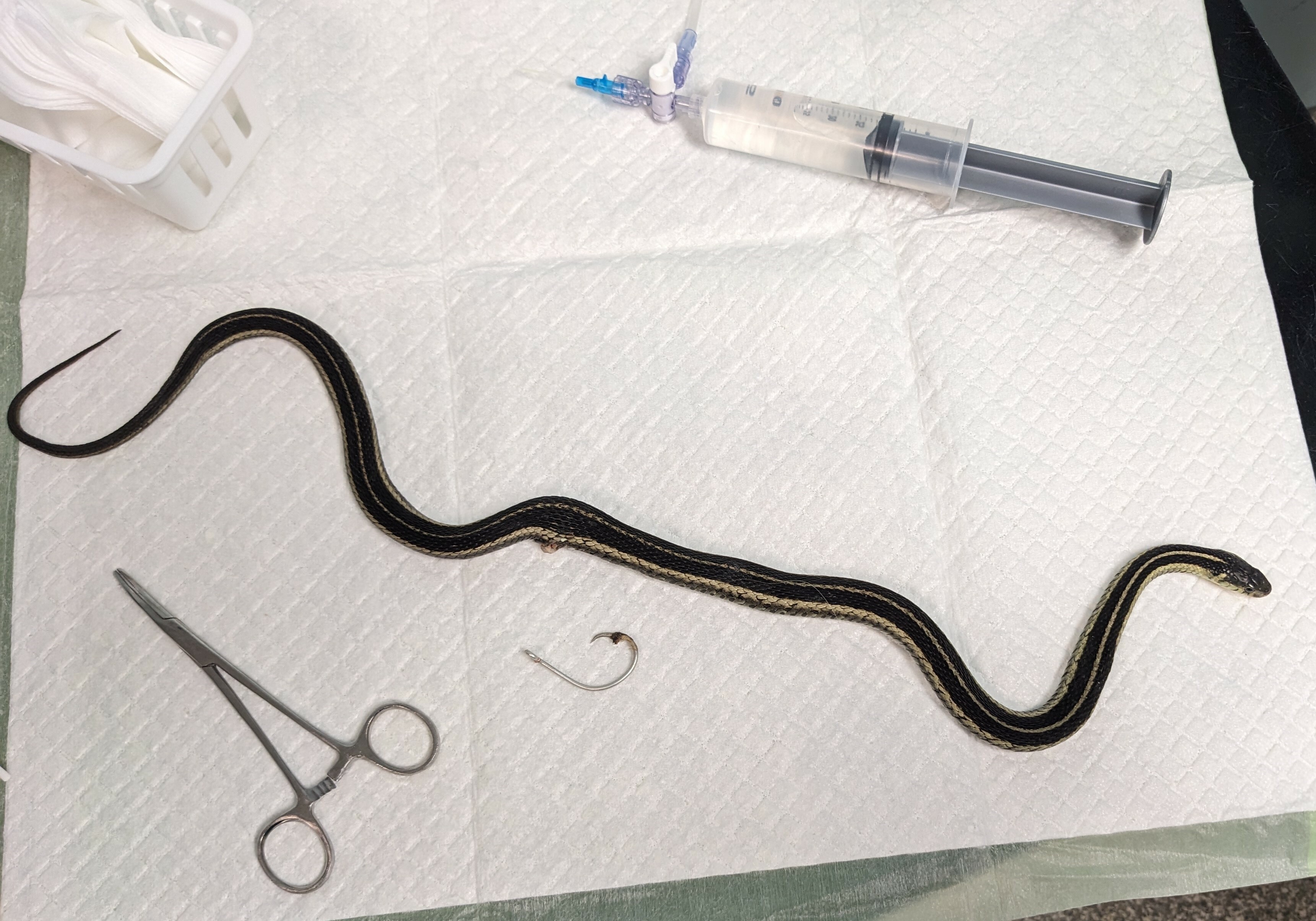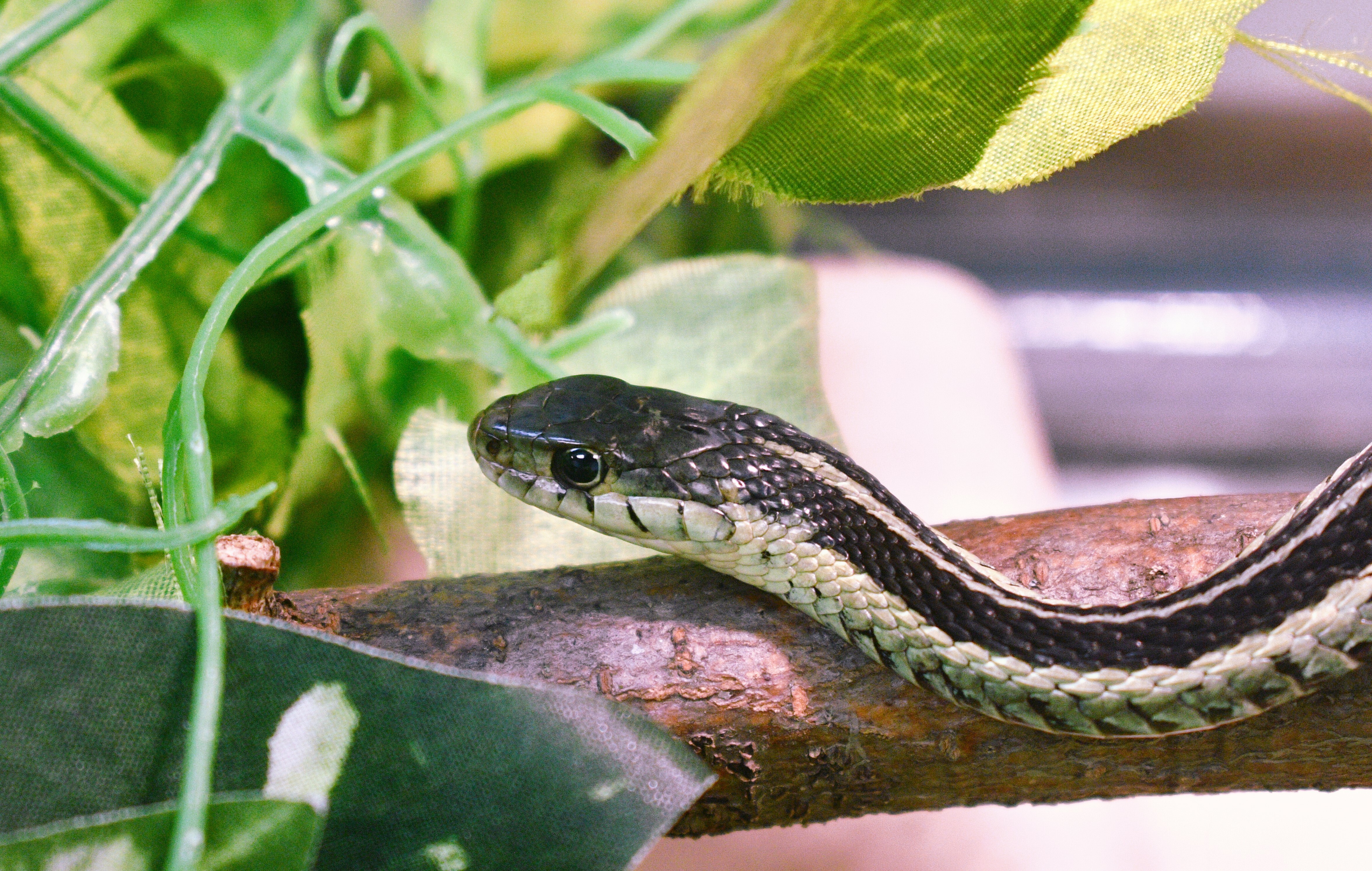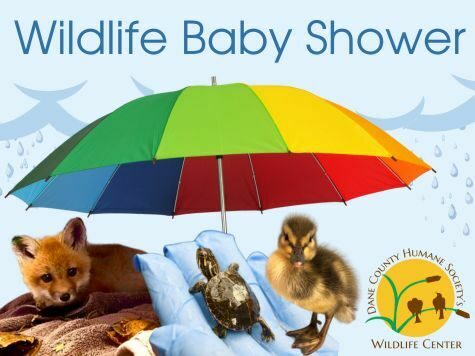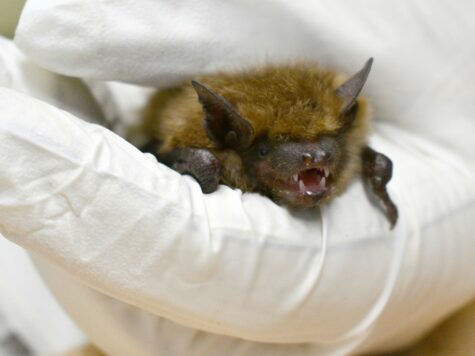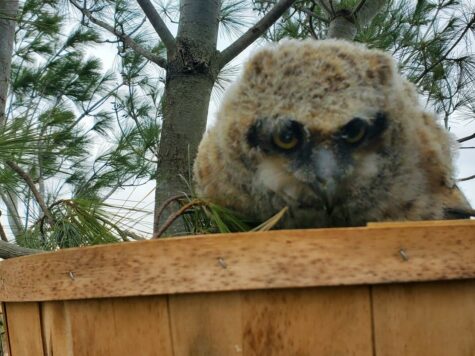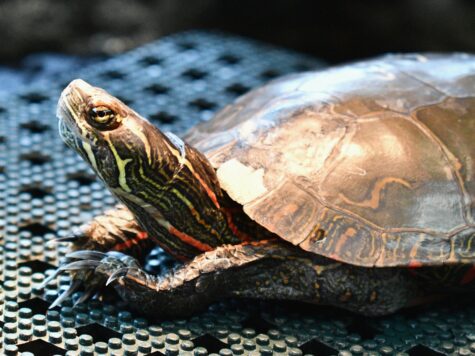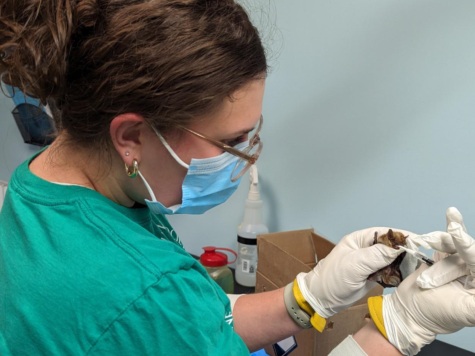On September 1st, 2023, Common Garter Snake #23-1671 was admitted after it had swallowed a very large fishing hook. How did we know? The sharp tip of the hook was immediately visible — it had punctured out from the snake’s body.
This shocking injury was concerning because the snake’s organs were impacted, and we did not know how well they would heal. Our Certified Veterinarian Technician (CVT) staff sedated the snake to remove the hook and our partnered veterinarians from the UW-Madison Wildlife and Zoo Medicine Program sutured the wound closed. We tube-fed the snake a liquid diet during the healing process and started a course of antibiotics, hoping they would do well.
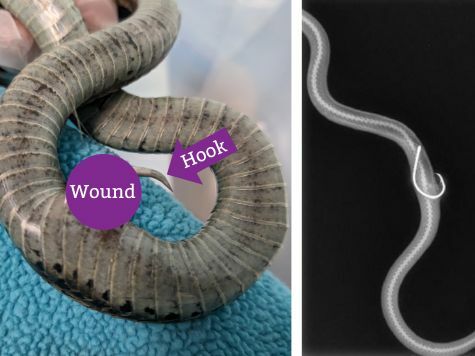
A few days later, under direction from our team of veterinarians, we performed a barium study to verify the GI tract was healing appropriately. We gave the snake barium orally, and took x-rays twice a day for five days, to see if the material would pass through without any abnormalities. To everyone’s relief, everything looked normal! This snake miraculously survived, and even thrived, which would not have been possible without the care it received.
Sarah Karls is a Senior Licensed Wildlife Rehabilitator
